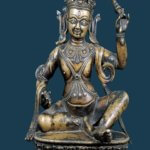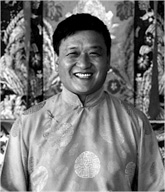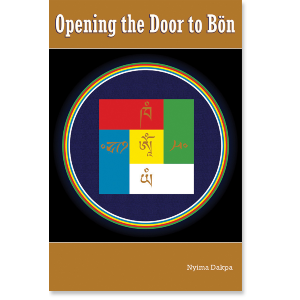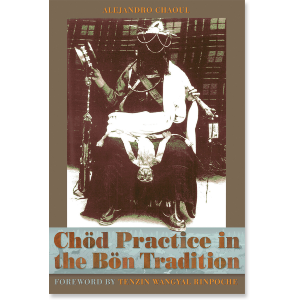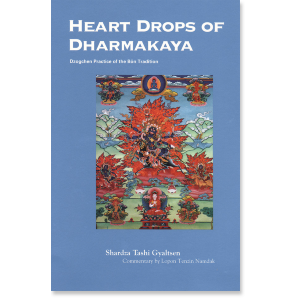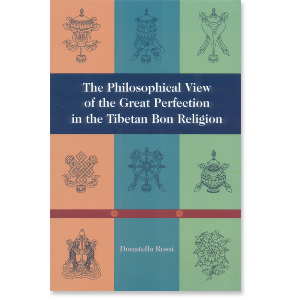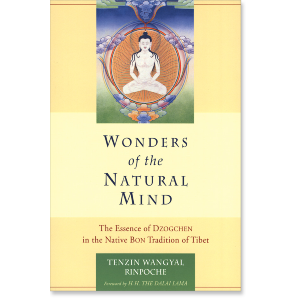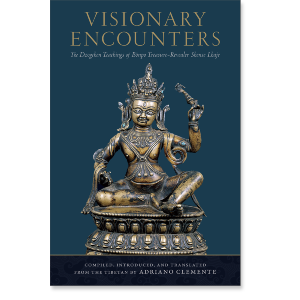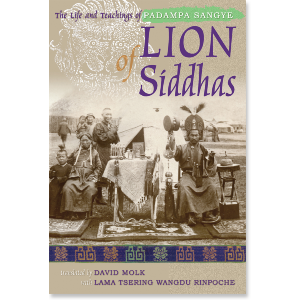| The following article is from the Winter, 1993 issue of the Snow Lion Newsletter and is for historical reference only. You can see this in context of the original newsletter here. |
Center of Study for Tibetan Religion & Culture
with a
Focus on the Indigenous Bön Religion of Tibet
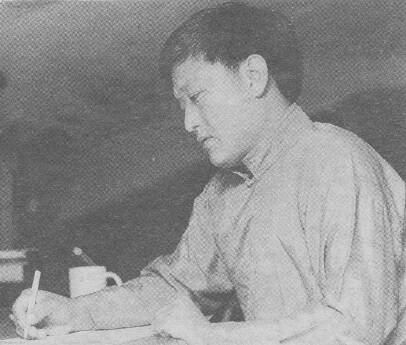
Geshe Tenzin Wangyal Rinpoche, Director of Ligmincha Institute
Ligmincha Institute, currently based in Richmond, Virginia, is a newly formed center for the study of Tibetan religion and culture with a focus on the indigenous Bon religion of Tibet. Under the guidance of Geshe Tenzin Wangyal Rinpoche, President and Director of the Institute, a seven-year formal program of study in Sutra, Tantra and Dzogchen is being planned.
The activities of the Institute are divided into several Centers which are described below.
It is for the purpose of preserving and studying this ancient Zhangzhung lineage of the Bon teachings in the contemporary world that the Ligmincha Institute has been established.
Bön is the name for the pre-Buddhist religious culture and civilization of Tibet and other parts of early Central Asia. Practitioners of this ancient tradition are known as Bonpos. Although they have been much persecuted in the past, today the Bonpos possess Lama-scholars, monasteries, a canon of scriptures, and system of philosophy and education in every way comparable to those of the four schools of Tibetan Buddhism.
As with the Nyingmapa school, the higher teachings of the Bon tradition, belonging to the Fruitional Ways of Bon, are known as Sutra, Tantra, and Dzogchen. These higher spiritual teachings, both exoteric and esoteric, are known as Yungdrung Bon, the unchanging and indestructible Dharma, which is taught by all the buddhas of the three times of past, present and future. But, in addition, there exists an indigenous system of shamanism and healing belonging to the Causal Ways of Bon that gives Bon its unique and original character.
H.H. the Dalai Lama and the Tibetan Government-in-Exile at Dharamsala, India have now-recognized Bon as the fifth among the traditional religious schools of Tibet. The Lamas belonging to the Nvingma, Kagvu, Sakya and Gelug schools all look back to the historical figure of Shakyamuni Buddha, who appeared in Northern India in the sixth century B.C.E., as the original founder of their tradition and as the source of their Dharma. However, the Bonpo Lamas, while accepting Shakyamuni as one Buddha among many, look back to another historical figure, the Iranian Prince Tonpa Shenrab Miwoche, as an earlier Buddha and as the source of their transmissions of Sutra, Tantra, and Dzogchen.
According to the Bon tradition, the Buddha Tonpa Shenrab appeared in the country of Olmo Lung-ring, also known as Shambhala, located somewhere in ancient Tazig, the Iranian-speaking region of Western Central Asia, some 18,000 years ago. From Olmo Lung-ring in Tazig, the higher teachings of Bon were brought to the country of Zhang-zhung in Western Tibet, the celebrated region centering around the sacred mountain of Mt Kailash.
In his own day, Tonpa Shenrab briefly visited Tibet proper, but there he taught only the shamanic practices of the four Causal Ways of Bon because the Tibetans were not ready for the higher teachings. At that time the Tibetans were still sorely oppressed by the spirits of sky, earth, and underworld (lha gnyan klu) who afflicted humanity with manifold ills and diseases. The shamanic teachings and practices were therefore best suited to the conditions of the time.
In a later age, in the era of the first and the second kings of Tibet, Nyatri Tsenpo and Mutri Tsanpo (eleventh century BCE), the higher teachings of Sutra, Tantra, and Dzogchen were brought to Tibet by certain Iranian and Zhangzhungpa sages. The latter king was especially renowned as a practitioner of the Tantra system of Yung-drung Bon. Except for the persecution inaugurated by the eighth king of Tibet, Drigum Tsanpo, in 683 BCE, the succeeding kings of Tibet were generous patrons of the Bonpos until the eighth century of our own era.
In general, it was said that in those days the ancient kingdom of Tibet was protected by the powers of the Drung or Bards, the Deu or Soothsayers, and the Bonpos. This situation continued until the Buddhist king of Tibet, Tisong Detsan, in the eighth century launched a second persecution of the Bonpos. During each of these persecutions, the Bonpos concealed their texts as Termas or hidden treasures.
With the rediscovery of these texts, beginning in the tenth century, the Bon tradition underwent a great revival in Tibet, eventually leading to the establishment of monasteries and colleges similar to the Buddhist ones. It is for the purpose of preserving and studying this ancient Zhangzhung lineage of the Bon teachings in the contemporary world that the Ligmincha Institute has been established.
Ligmincha (lig-mi-rgya) was the name of the last dynasty of kings of Zhang-zhung before it was absorbed into the Tibetan empire with the rest of the region in the eighth century. It was from the Zhang-zhung language that the original texts of the Bon tradition were translated into Tibetan over a period of several centuries by many eminent scholars and translators. The texts of these teachings were first organized into The Four Portals and the Treasury (sgo bzhi mdzod Inga), and subsequently they were classified into The Nine Ways of Bon (bon theg-pa rim dgu).
Some of these texts have descended in a continuous unbroken lineage (snyan brgyud) from remote times until the present day. Many others were hidden treasures (gter-ma), concealed during the two persecutions by the kings of Tibet and rediscovered centuries later, from the tenth century onwards.
There exist three systems of classification of the Nine Ways of Bon, that according to the Southern Treasures (Iho-gter), that according to the Central Treasures (dbtis-gter), and that according to the North Treasures (byang-gter.) The Institute will organize its own curriculum around the former two, the Southern Treasures and the Central Treasures, which are the most extensive and comprehensive.
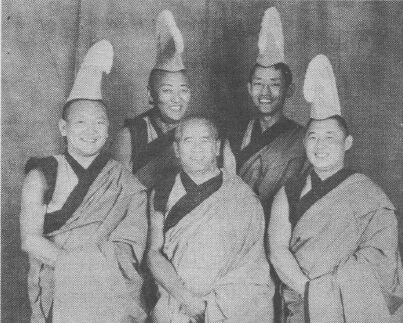
The Institute will introduce to the West for the first time the systematic study of Yungdrung Bon, the Eternal Dharma, including its teachings, meditations, and practices (Ita sgom spyod gsum). The activity of the Institute will focus on the teaching and study of the original Tibetan texts of Sutra, Tantra, and Dzogchen as expounded in the Bon tradition. Translations of all or of salient parts of these texts will be made into English and other Western languages. At the Institute there will also be the teaching of Tibetan language and literature in general.
The Institute will also seek to preserve and develop in a creative fashion the arts and sciences of ancient Tibet and there will be the opportunity to explore the contributions these traditional arts can make to contemporary culture.
Further, the Institute will seek to discover new ways in which the teachings and practices of the ancient Bon shamanic tradition can contribute to healing both the individual human being and the natural environment of our planet earth. In this respect, special emphasis will be placed on the many connections between Bon and other ancient native and tribal shamanic traditions.
In these and other ways, the Institute hopes to preserve and further develop the indigenous culture of Tibet among the Tibetans themselves living in exile from their homeland, as well as to communicate the ancient tradition of Bon to interested people in the West. We at the Institute believe that the ancient Bon tradition of Tibet, which otherwise is in much danger of being lost to humanity, can make a significant contribution toward solving the problems facing the world at the end of the twentieth century, and that Bon has an extraordinary potential for contributing to the new world-spanning civilization of the twenty-first century, especially in the areas of healing, human development, and ecology.
Divisions of the Institute
The Center for Religious Teachings and Transmissions
The focus of this Center will be the training of students in the teachings and practices of Bon, especially emphasizing the view, meditation, and practice of Dzogchen. Students will not only study the original texts in Tibetan and in English translation for Sutra, Tantra, and Dzogchen, but will also receive detailed instruction and expert supervision in the meditative traditions associated with these various spiritual paths.
Students, over the course of their studies at the Institute, will receive complete authentic instructions, transmission, and initiations (bdang lung khrid) in the traditional Tibetan manner. Parallel to instruction and study, there will be a series of intensive meditation practice sessions of varying duration. There will also exist ample facilities at the Institute for making personal retreats as the opportunities arise, and the individual student, in consultation with qualified Lamas, will be able to design a program of personal meditation practice suited to his or her individual needs and capacities.
Two tracks are envisioned for the program, one for those who desire to become teachers and meditation instructors, and one for those who simply desire to deepen their spiritual knowledge and develop their own personal meditation practice.
The approach here at the Center will be purely traditional from the Bon and the Nyingma standpoints, while at other Centers, elsewhere in the Institute, efforts will be made to integrate the insights obtained from traditional training in Dzogchen with our contemporary culture in terms of the creative arts, therapy, and healing.
The teaching staff of the Institute will maintain contact throughout the years with both local and long distance students and provide a support system for their studies and practice.
The Center for Translation and Research
The purpose of this Center is to promote scholarly research into the rich cultural heritage of Bon and the ancient civilization of Tibet. Thus the Center has established a library to house a major collection of rare Tibetan books and manuscripts presently being published in India, Nepal, Bhutan, Tibet, and China. This library will serve as a research facility for scholars and translators in the field of Tibetan studies. A special emphasis will be placed on collecting texts, both Bonpo and Buddhist, that deal with the teachings and practice of Dzogchen.
The Center will give high priority to translating Tibetan texts into English and other Western languages, especially those texts relating to Dzogchen and the ancient shamanic practices of Tibet. Historical, philosophical, exegetical, literary, medical, mythological, folkloric, ritualistic, and shamanic texts will be included in the translation projects of the Institute.
Cultural Center for Traditional and Contemporary Arts
The activities of this Center operate in two principal areas: First there is the concerted effort to preserve the rich traditional cultural and artistic heritage of Tibet. This will be accomplished through a regular program for teaching the Tibetan language, both classical and colloquial, including calligraphy and poetics. Other traditional arts such as astrology and divination will be taught from time to time. There will be a special emphasis on teaching the traditional arts of thangka painting, sculpture, mask making, drama, music, dance, and design in general. This will be accomplished through inviting teachers of the traditional Tibetan arts to be in residence and teach at the Institute as well as through organizing shows, performances, and exhibits of the traditional Tibetan arts.
1993 Program
Ligmincha's 1993 program, June 11th-August 11th,was held near Woodstock, New York. Camping facilities were available. The daily schedule included approximately four hours of practice, two formal teaching sessions and one cultural class. Group discussion meetings also occurred as required.
Staff of the Institute
Honorary Chairman: H.H. Lungtog Tenpai Nyimpa, Abbot of Menri Monastery, Dolanji, India
Honorary Director: Ven. Lopon Tenzin Namdak, Founder and Head Teacher of Menri Monastery, Dolanji, India and of Norbutse Monastery, Kathmandu, Nepal
President and Director of the Institute: Geshe Tenzin Wangyal Rinpoche
Vice-President: Anne Klein, Associate Professor, Rice University
Coordinator of Daily Operations: Anthony Curtis
Secretary: Joan Kalyan Curtis
Treasurer: John Kalyan
Translation and Research Center Director: Prof. John Mvrdhin Reynolds
Cultural Center Coordinator: Jennifer Axinn
Cultural Consultant: Prof. Michael Fischer
Click here for more information about Ligmincha Institute for the Study of the Religions and Cultures of Tibet.

